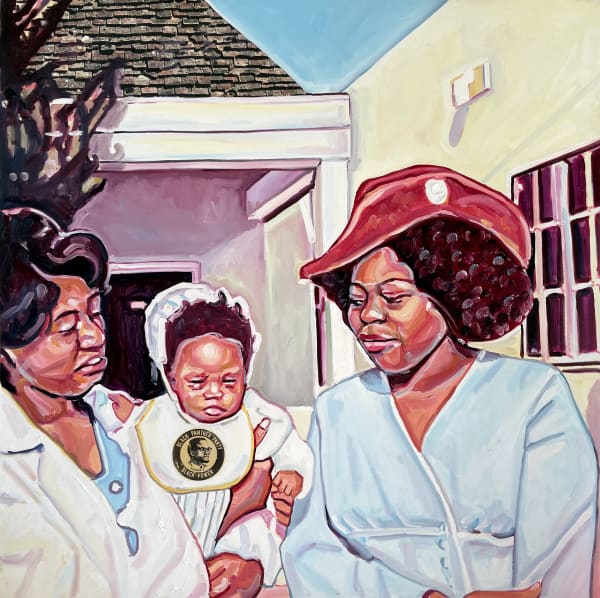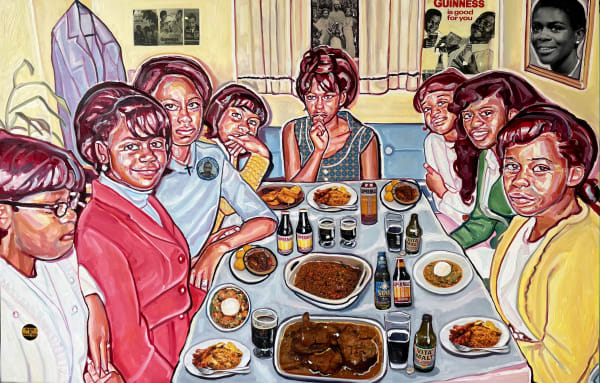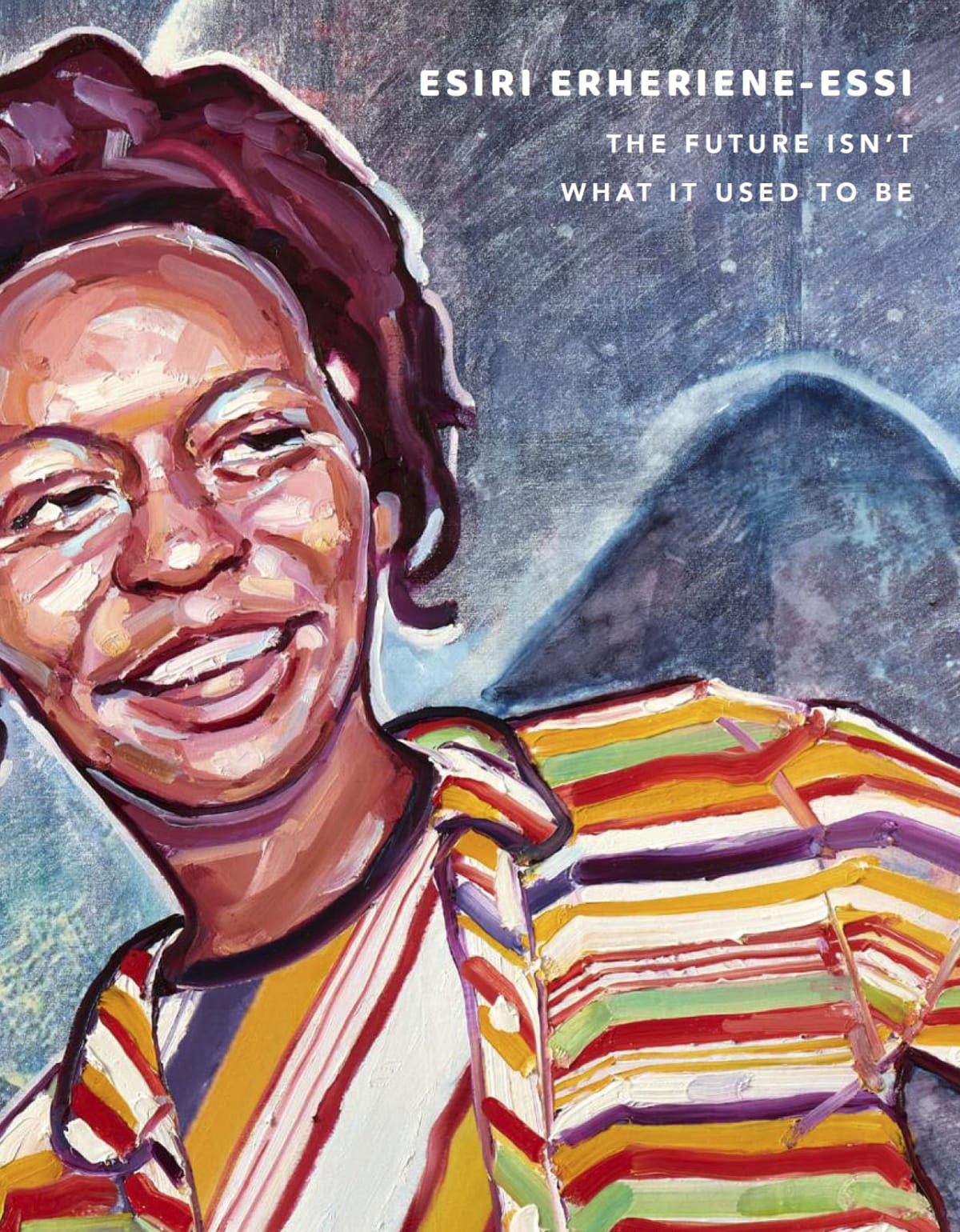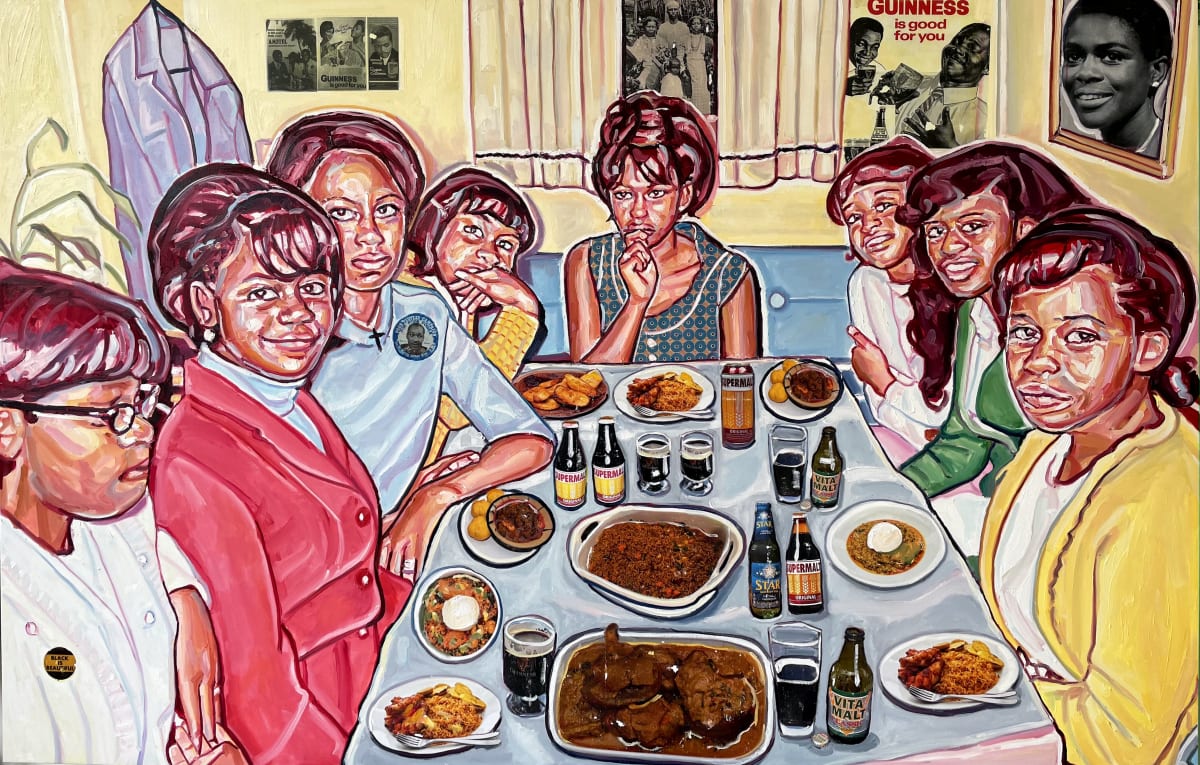Following her breakthrough exhibition at the Stedelijk Museum in Amsterdam after being nominated for the Prix de Rome in 2019 (the oldest and most prestigious award in the Netherlands for artists under the age of 40), Esiri Erheriene-Essi, the London-born but Amsterdam-based artist, made her name as one of the most promising emerging painters of her generation.
After completing a two-year residency at Amsterdam’s post graduated institute De Ateliers, Erheriene-Essi developed a highly personal approach to her work, concentrating on large-scale figurative paintings that give prominence to images of Black people, by exploring the untold, often unknown and forgotten or even neglected narratives of members from the African diaspora.
As a British born Nigerian, the artist is drawn to and analyses images of Black life that she sources largely from national and private archives from around the world as well as images from popular culture (past and present), from newspapers and other media outlets. Erheriene-Essi transfers these images to her canvases where she uses them to create settings and contexts for her painted images, which are of a more private character. Based on amateur photographs from the artist’s collection of others (often discarded) family albums, anonymous people become the heroes and protagonists of her stories. The scenes depicted are often everyday moments of individuals and families living their normal lives as Erheriene-Essi is interested in producing images centred on Blackness occupying multiplex spaces in myriad ways, mundane as (well as) political. Providing room for both contemplation and difference - where the anger, fear, and ambivalence of the past, present and future, is not denied but also not allowed to stand alone as representation of Blackness, but rather, as it does in our lives, coexist with joy, hope and the ordinary.
Through collaging the past and the present, the public with the domestic, the remembered and the disregarded she acknowledges just how fragmented and circumstantial history is. In sharing these intimate glimpses and through this selecting, deconstructing and reformulating of the source photographs through painting, Erheriene-Essi invites the viewer to connect with the figures in ambiguous yet completely present and familiar ways.
 Esiri Erheriene-EssiThe Excursion, 2021Oil, ink and xerox transfer on linen135 x 135 cm
Esiri Erheriene-EssiThe Excursion, 2021Oil, ink and xerox transfer on linen135 x 135 cm Esiri Erheriene-EssiThe Future Isn't What it Used To Be, 2021Oil, ink and xerox transfer on linen150 x 232 cm
Esiri Erheriene-EssiThe Future Isn't What it Used To Be, 2021Oil, ink and xerox transfer on linen150 x 232 cm Esiri Erheriene-EssiThings I Imagined, 2021Oil, ink and xerox transfer on linen175 x 145 cm
Esiri Erheriene-EssiThings I Imagined, 2021Oil, ink and xerox transfer on linen175 x 145 cm Esiri Erheriene-EssiA conflict of Interest, 2021Oil, ink and xerox transfer on linen135 x 135 cm
Esiri Erheriene-EssiA conflict of Interest, 2021Oil, ink and xerox transfer on linen135 x 135 cm Esiri Erheriene-EssiForever isn't for everyone , 2021oil, ink and xerox transfer on linen150 x 150 cm
Esiri Erheriene-EssiForever isn't for everyone , 2021oil, ink and xerox transfer on linen150 x 150 cm Esiri Erheriene-EssiAnd for the purposes of any potential lawsuits, that is just my opinion, not a statement of fact, 2021oil, ink and xerox transfer on linen135 x 135 cm
Esiri Erheriene-EssiAnd for the purposes of any potential lawsuits, that is just my opinion, not a statement of fact, 2021oil, ink and xerox transfer on linen135 x 135 cm Esiri Erheriene-EssiA few minutes early is right on time, 2021oil, ink and xerox transfer on linen145 x 195 cm
Esiri Erheriene-EssiA few minutes early is right on time, 2021oil, ink and xerox transfer on linen145 x 195 cm Esiri Erheriene-EssiThe Adults Are Talking, 2021oil ink and xerox transfer on linen150 x 150 cm
Esiri Erheriene-EssiThe Adults Are Talking, 2021oil ink and xerox transfer on linen150 x 150 cm Esiri Erheriene-EssiYou've Really Got A Hold On Me (for Jean Harris), 2021oil, ink and xerox transfer on linen135 x 175 cm
Esiri Erheriene-EssiYou've Really Got A Hold On Me (for Jean Harris), 2021oil, ink and xerox transfer on linen135 x 175 cm












